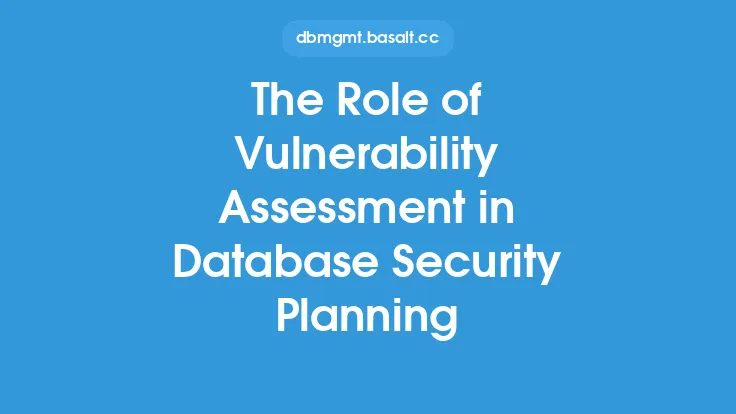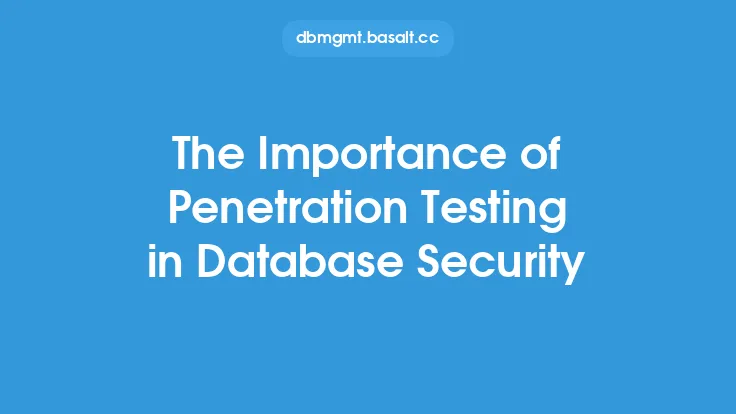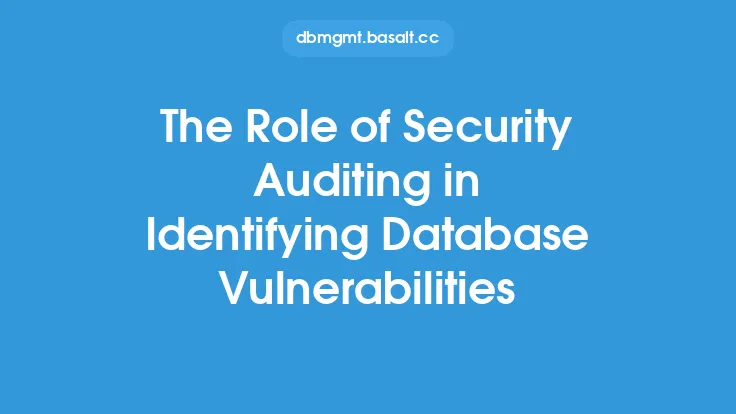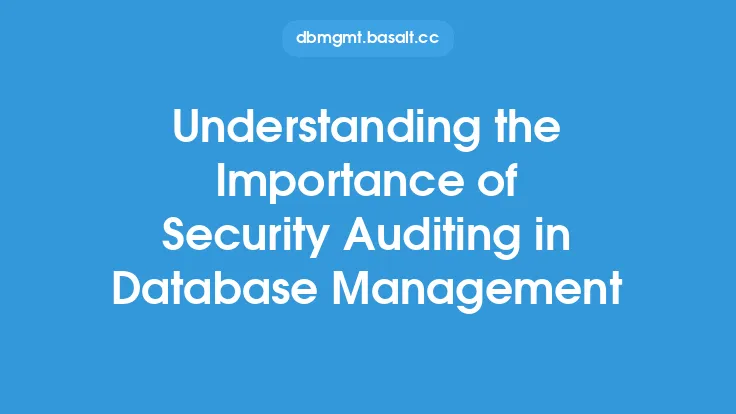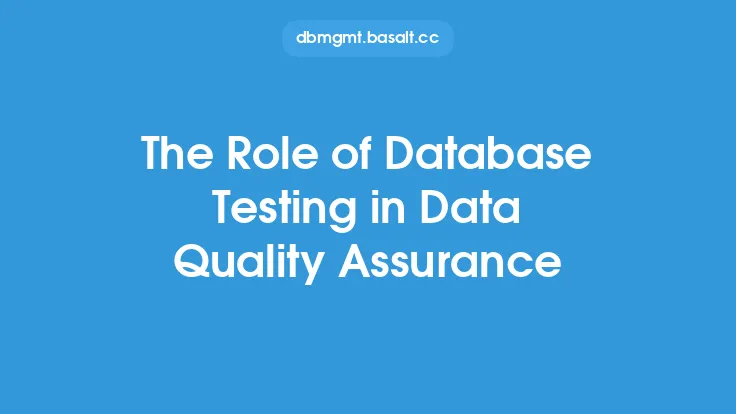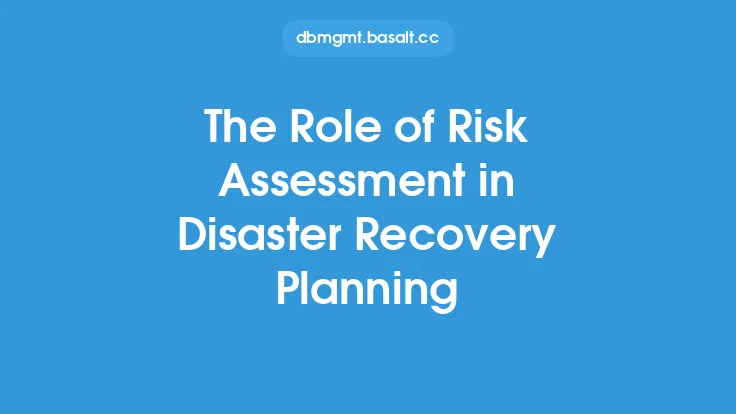Penetration testing plays a crucial role in database security assessment, as it helps identify vulnerabilities and weaknesses in the database system that could be exploited by attackers. The primary goal of penetration testing is to simulate real-world attacks on the database, allowing organizations to assess their defenses and take corrective measures to prevent potential breaches. In this context, penetration testing is an essential component of a comprehensive database security strategy, as it enables organizations to proactively identify and address security risks before they can be exploited by malicious actors.
Introduction to Penetration Testing in Database Security
Penetration testing in database security involves a series of simulated attacks on the database system, designed to test its defenses and identify potential vulnerabilities. This process typically involves a team of experienced security professionals, known as penetration testers or ethical hackers, who use various techniques and tools to attempt to breach the database. The goal of these simulated attacks is to identify weaknesses in the database system, such as insecure configurations, poorly designed access controls, or unpatched vulnerabilities, that could be exploited by attackers to gain unauthorized access to sensitive data.
Types of Penetration Testing in Database Security
There are several types of penetration testing that can be applied to database security, including black box, white box, and gray box testing. Black box testing involves simulating an attack on the database without any prior knowledge of the system's architecture or configuration. This type of testing is designed to mimic the actions of a real-world attacker, who would not have access to internal information about the database. White box testing, on the other hand, involves testing the database with full knowledge of its architecture and configuration. This type of testing is useful for identifying vulnerabilities that may not be apparent to an external attacker. Gray box testing falls somewhere in between, where the tester has some knowledge of the database system, but not complete access to its internal workings.
Penetration Testing Methodologies for Database Systems
Penetration testing methodologies for database systems typically involve a series of steps, including planning, reconnaissance, exploitation, and post-exploitation. The planning phase involves identifying the scope of the test, including the specific database systems to be tested and the types of attacks to be simulated. The reconnaissance phase involves gathering information about the database system, such as its architecture, configuration, and potential vulnerabilities. The exploitation phase involves attempting to exploit identified vulnerabilities to gain unauthorized access to the database. The post-exploitation phase involves analyzing the results of the test, identifying potential vulnerabilities, and providing recommendations for remediation.
Tools and Techniques Used in Penetration Testing
Penetration testers use a variety of tools and techniques to simulate attacks on database systems. These may include network scanning tools, such as Nmap, to identify open ports and services; vulnerability scanning tools, such as Nessus, to identify potential vulnerabilities; and exploitation tools, such as Metasploit, to attempt to exploit identified vulnerabilities. Penetration testers may also use social engineering techniques, such as phishing or pretexting, to attempt to trick database administrators into revealing sensitive information or providing access to the database.
Benefits of Penetration Testing in Database Security
The benefits of penetration testing in database security are numerous. By simulating real-world attacks on the database, organizations can identify potential vulnerabilities and weaknesses before they can be exploited by malicious actors. This allows organizations to take proactive measures to remediate identified vulnerabilities, reducing the risk of a potential breach. Penetration testing can also help organizations to improve their incident response plans, by identifying potential vulnerabilities and developing strategies for responding to attacks. Additionally, penetration testing can help organizations to comply with regulatory requirements, such as PCI-DSS or HIPAA, by demonstrating that they have taken proactive measures to protect sensitive data.
Challenges and Limitations of Penetration Testing
While penetration testing is an essential component of a comprehensive database security strategy, there are several challenges and limitations to consider. One of the primary challenges is the potential for disruption to normal business operations, as penetration testing can involve simulated attacks on the database that may cause downtime or data loss. Additionally, penetration testing can be resource-intensive, requiring significant time and effort from experienced security professionals. There is also the potential for false positives, where the test identifies vulnerabilities that do not actually exist, or false negatives, where the test fails to identify actual vulnerabilities.
Best Practices for Conducting Penetration Tests on Databases
To get the most out of penetration testing, organizations should follow best practices for conducting tests on databases. This includes defining a clear scope for the test, including the specific database systems to be tested and the types of attacks to be simulated. Organizations should also ensure that the test is conducted by experienced security professionals, who have the necessary skills and expertise to simulate real-world attacks. Additionally, organizations should ensure that the test is conducted in a controlled environment, to minimize the risk of disruption to normal business operations. Finally, organizations should ensure that the results of the test are thoroughly analyzed, and that recommendations for remediation are implemented in a timely and effective manner.
Conclusion
In conclusion, penetration testing plays a critical role in database security assessment, as it helps identify vulnerabilities and weaknesses in the database system that could be exploited by attackers. By simulating real-world attacks on the database, organizations can assess their defenses and take corrective measures to prevent potential breaches. While there are challenges and limitations to consider, the benefits of penetration testing in database security are numerous, and it is an essential component of a comprehensive database security strategy. By following best practices for conducting penetration tests on databases, organizations can ensure that their database systems are secure, and that sensitive data is protected from unauthorized access.
